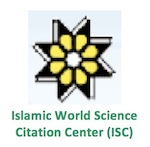


Google Scholar citation report
Citations : 5373
ASEAN Journal of Psychiatry received 5373 citations as per google scholar report
ASEAN Journal of Psychiatry peer review process verified at publons
| Journal Name | ASEAN Journal of Psychiatry (MyCite Report) | ||||
|---|---|---|---|---|---|
| Total Publications | 456 | ||||
| Total Citations | 5688 | ||||
| Total Non-self Citations | 12 | ||||
| Yearly Impact Factor | 0.93 | ||||
| 5-Year Impact Factor | 1.44 | ||||
| Immediacy Index | 0.1 | ||||
| Cited Half-life | 2.7 | ||||
| H-index | 30 | ||||
| Quartile |
|
- Anxiety Disorders
- Behavioural Science
- Biological Psychiatry
- Child and Adolescent Psychiatry
- Community Psychiatry
- Dementia
- Community Psychiatry
- Suicidal Behavior
- Social Psychiatry
- Psychiatry
- Psychiatry Diseases
- Psycho Trauma
- Posttraumatic Stress
- Psychiatric Symptoms
- Psychiatric Treatment
- Neurocognative Disorders (NCDs)
- Depression
- Mental Illness
- Neurological disorder
- Neurology
- Alzheimer's disease
- Parkinson's disease
Abstract
MOTIVATION FOR PHYSICAL ACTIVITY IN COLLEGE STUDENTS: THE INFLUENCE OF GENDER AND TYPE OF ACTIVITY
Author(s): Zuhair Al Salim*In the realm of mental health, the significance of physical activity cannot be overstated. While traditional psychiatric treatments often focus on pharmacotherapy and psychotherapy, the integration of physical activity into psychiatric care has garnered increasing attention and recognition. The lack of motivation among college students to participate in physical activity is a growing concern. Understanding the factors that motivate students to engage in sports or exercise is crucial in promoting physical activity. The present study aimed to investigate the motives behind male and female college students’ participation in physical activity and the type of physical activities they prefer. The sample comprised 768 undergraduate students aged between 18 and 24 years, of which 58.33% were females and 41.67% were males. The Exercise Motivation Inventory-2 (EMI-2) was used to assess the physical activity motivation of male and female students who participated in sports or exercises, with 14 subscales. The findings suggest that gender and type of physical activity have a significant impact on four of the fourteen physical activity motivational subscales (competition, enjoyment, challenge, and revitalization). The type of physical activity also showed significant differences in five physical activity motivational subscales (affiliation, appearance, nimbleness, positive health, and social recognition). Regarding gender, only four subscales proved to be significant (affiliation, nimbleness, social recognition, and strength and endurance). The study concluded that intrinsic motivations such as improving health and enjoyment, and ego-oriented factors such as competition, challenge, and strength and endurance are crucial in promoting regular sports behavior, particularly among male university students. On the other hand, external factors such as appearance and nimbleness tend to motivate female students who engage in exercise.


























